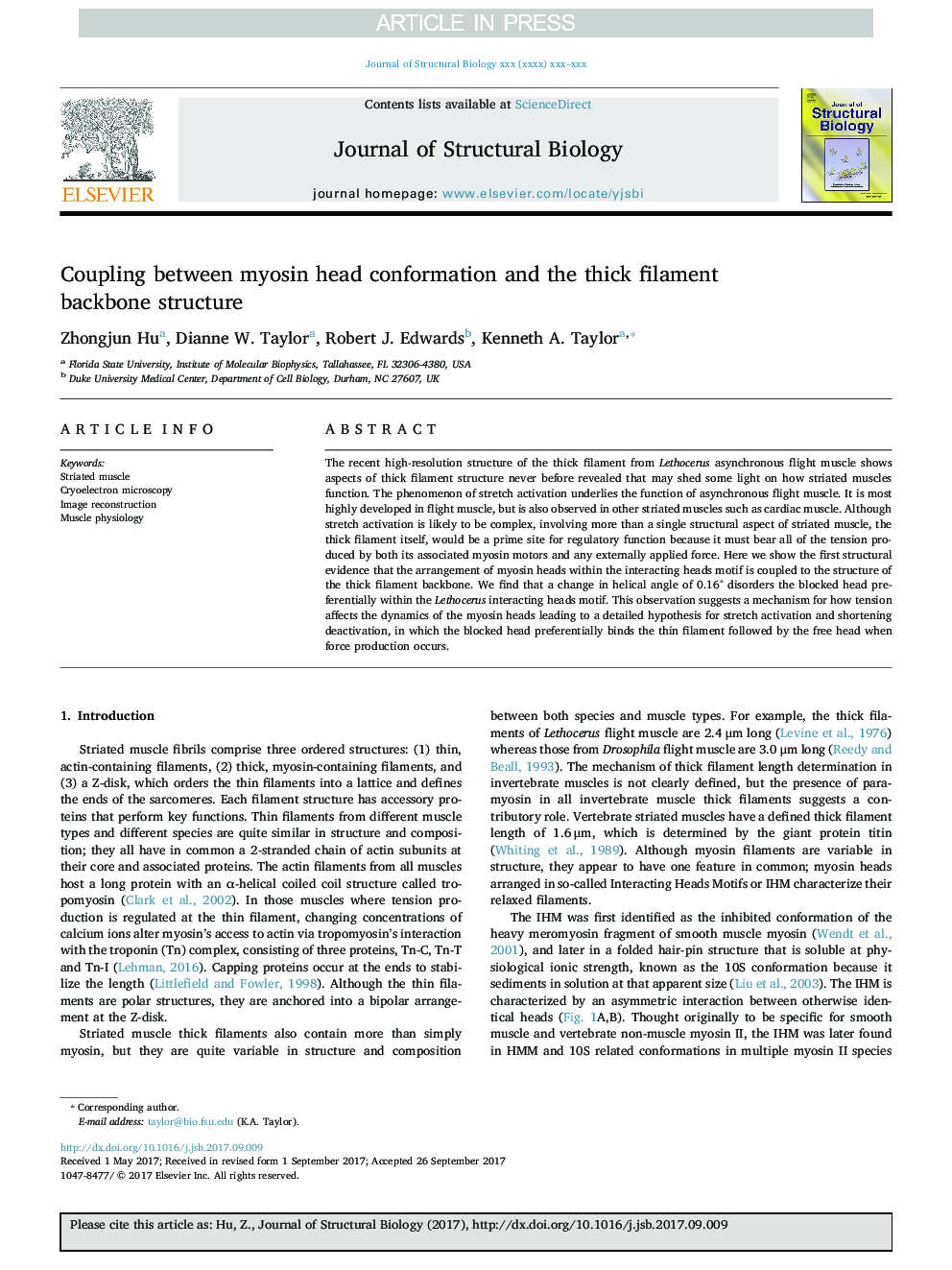| Article ID | Journal | Published Year | Pages | File Type |
|---|---|---|---|---|
| 8648295 | Journal of Structural Biology | 2017 | 9 Pages |
Abstract
The recent high-resolution structure of the thick filament from Lethocerus asynchronous flight muscle shows aspects of thick filament structure never before revealed that may shed some light on how striated muscles function. The phenomenon of stretch activation underlies the function of asynchronous flight muscle. It is most highly developed in flight muscle, but is also observed in other striated muscles such as cardiac muscle. Although stretch activation is likely to be complex, involving more than a single structural aspect of striated muscle, the thick filament itself, would be a prime site for regulatory function because it must bear all of the tension produced by both its associated myosin motors and any externally applied force. Here we show the first structural evidence that the arrangement of myosin heads within the interacting heads motif is coupled to the structure of the thick filament backbone. We find that a change in helical angle of 0.16° disorders the blocked head preferentially within the Lethocerus interacting heads motif. This observation suggests a mechanism for how tension affects the dynamics of the myosin heads leading to a detailed hypothesis for stretch activation and shortening deactivation, in which the blocked head preferentially binds the thin filament followed by the free head when force production occurs.
Related Topics
Life Sciences
Biochemistry, Genetics and Molecular Biology
Molecular Biology
Authors
Zhongjun Hu, Dianne W. Taylor, Robert J. Edwards, Kenneth A. Taylor,
